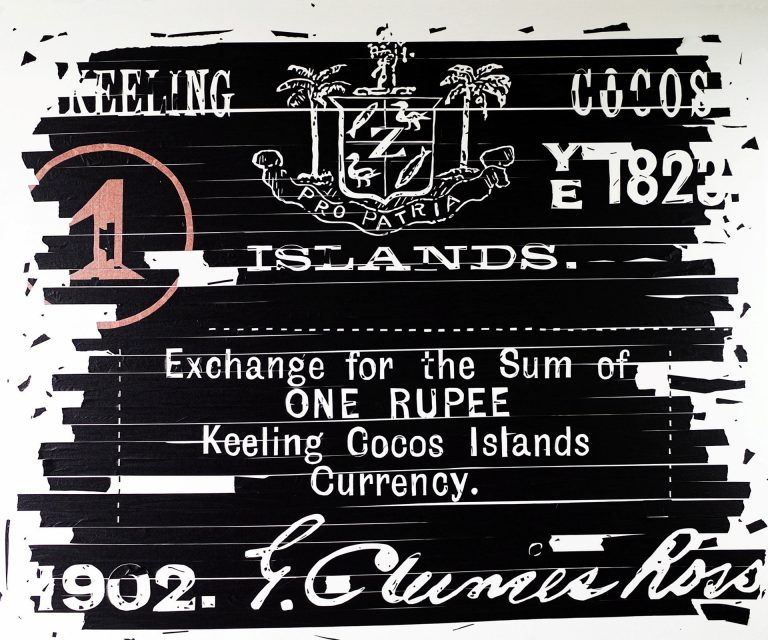We acknowledge the Traditional Owners of the land on which the Queensland Art Gallery | Gallery of Modern Art stands and recognise the creative contribution First Australians make to the art and culture of this country.

Chong Kim Chiew / Malaysia b.1975 / Cocos (Keeling) Islands (from ‘Banknote’ series) 2021 / Tape on canvas / 150 x 180cm / Purchased 2021. QAGOMA Foundation / Collection: QAGOMA / © Chong Kim Chiew
Chong Kim ChiewCocos (Keeling) Islands 2021
Not Currently on Display
Cocos (Keeling) Islands belongs to Chong Kim Chiew’s ‘Banknote’ series, in which he reconstructs historical banknotes from past and present ruling structures in Malaysia, using strips of tape applied either directly to the wall or to canvas.
The Cocos Islands were annexed by Britain in 1857 and later came under Australian sovereignty in 1955. Geographically located in South-East Asia, the islands’ population is mostly Malay — the descendants of plantation labourers who transmigrated in the mid-nineteenth century. Cocos (Keeling) Islands is a re-creation of a 1902 two-rupee banknote that bears the signature of George Clunies-Ross, the resident magistrate of the islands at the time of issue.
Tape is often used to repair torn paper currency. Here, its material distortions conversely give the note the appearance of falling apart, bringing into question the integrity of the note and therefore its value. Chong presents the idea of nation as an aesthetic and political construct; the control of geographies and populations as temporal; and symbols of sovereign power ― such as currency ― as representative of the transient nature of power itself.
Chong Kim Chiew is known for his mischievous, thought-provoking works across a wide range of artistic media and materials. Common threads throughout his practice include a general focus on the idea of nation as an ideological, political and aesthetic construct, and a twofold reading of the word ‘trace’ as both an artistic technique and a vestige or remnant.
Born and raised in Malaysia, Chong chose to pursue his art studies in China, relocating to Guangzhou to undertake a degree in oil painting at the Academy of Fine Art. While studying, he became aware of the powerful strain of ridicule in Cantonese art and his artist friends’ rich knowledge of local histories. This inspired him on two levels: to make ‘attitude’ the centre of his practice with an emphasis on finding different ways to create and show work; and to immerse himself more deeply in the history of Malaysia, within the federation’s complex ethnic fabric, particularly in terms of his own Chinese heritage.